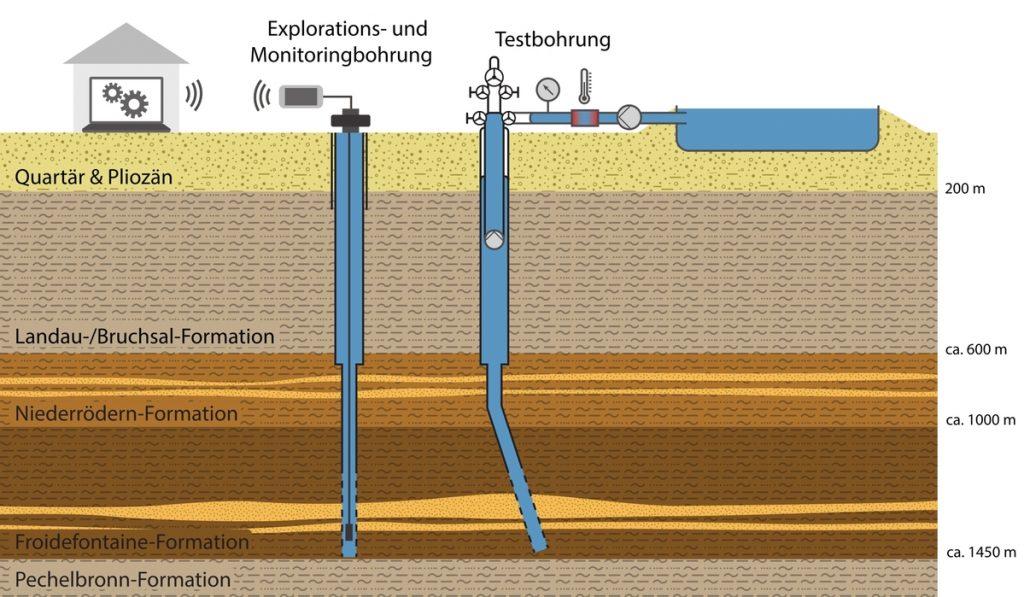KIT research aims to advance geothermal energy storage technology
***Kundenauftrag*** KIT-Zentrum Energie Energiewende JETZT – die Transformation beschleunigen! 9. Jahrestagung des KIT Zentrum Energie am 14. Juli 2022 in der Aula des Fortbildungszentrums für Technik und Umwelt (FTU) Energiewende JETZT – die Transformation beschleunigen! Das KIT-Zentrum Energie begrüßt Sie herzlich zu seiner 9. Jahrestagung. Diesmal stehen die wissenschaftlichen Beiträge der KIT-Energieforschung zur beschleunigten Umsetzung der Energiewende im Mittelpunkt der Tagung. Am Nachmittag freuen wir uns auf den Festvortrag „50 Jahre EnBW-Stiftung“ und auf die Verleihung des Heinrich-Hertz-Preises. © copyright by Karlsruher Institut für Technologie Allgemeine Services - Crossmedia Abdruck honorarfrei im redaktionellen Bereich Belegexemplar erbeten *** Local Caption *** ***Kundenauftrag*** KIT-Zentrum Energie Energiewende JETZT – die Transformation beschleunigen! 9. Jahrestagung des KIT Zentrum Energie am 14. Juli 2022 in der Aula des Fortbildungszentrums für Technik und Umwelt (FTU) Energiewende JETZT – die Transformation beschleunigen! Das KIT-Zentrum Energie begrüßt Sie herzlich zu seiner 9. Jahrestagung. Diesmal stehen die wissenschaftlichen Beiträge der KIT-Energieforschung zur beschleunigten Umsetzung der Energiewende im Mittelpunkt der Tagung. Am Nachmittag freuen wir uns auf den Festvortrag „50 Jahre EnBW-Stiftung“ und auf die Verleihung des Heinrich-Hertz-Preises. © copyright by Karlsruher Institut für Technologie Allgemeine Services - Crossmedia Abdruck honorarfrei im redaktionellen Bereich Belegexemplar erbeten ?
The DeepStor research project at the Karlsruhe Institute of Technology aims to enhance understanding on high-temperature aquifer thermal energy storage.
A research project in the Karlsruhe Institute of Technology (KIT) in Germany aims to advance technologies for high-temperature aquifer storage, thereby supporting existing district heating networks in Germany. To this end, two boreholes will be drilled for the research project in the KIT Campus North site at the end of the year.
The DeepStor project is being headed by Professor Eva Schill, who emphasized that geothermal energy can cover a quarter of Germany’s heating requirements, even with just the technology that is already available today. While the idea of storing heat underground is not new, most existing initiatives are in the low temperature range of around 50 degrees Celsius. The DeepStor project, on the other hand, will work in the temperature range of over 100 degrees Celsius.

This approach presents advantages to geothermal heating, as most existing district heating networks in Germany work at 110 degrees Celsius. This means that high-temperature aquifer storage can be integrated seamlessly into these networks, providing heat efficiently even for older buildings.
Salt as a technical challenge
The salt content of geothermal waters is being anticipated by the research team as challenge for this project. Schill explains that the salt concentration at depth in the Upper Rhine Graben is more than 120 grams of salt per liter of water. This salt can precipitate and clog the pores of the rock that allow for water storage. On the flipside, heated groundwater can also dissolve salts in the formation, creating more storage space.
“Down there we don’t affect the groundwater, which we can use for drinking water production and there is a lot of space to store very large amounts of heat,” Schill explains to emphasize the advantage of storing at depth, despite the challenges.
Securing community support
The research team acknowledges that support from the public is essential to the success of the project. This is particularly important in light of concerns over the safety of drinking water and release of radioactive radon. To help address these concerns, the team has started a citizen science project where participants can take measurements using seismometers and radon meters.
All of the data from the measurements are incorporated into a computer model which is then displayed on a special 85-inch monitor. This way, everyone involved can see how their own measurement data contributes to the project, providing better transparency. Several such monitors will be installed at central locations.
“We involve the public in the project from the start,” says Dr. Florian Bauer from Schill’s research group. “We have already engaged the public in the DeepStor permitting process and started a co-design with surrounding communities.”
Source: KIT